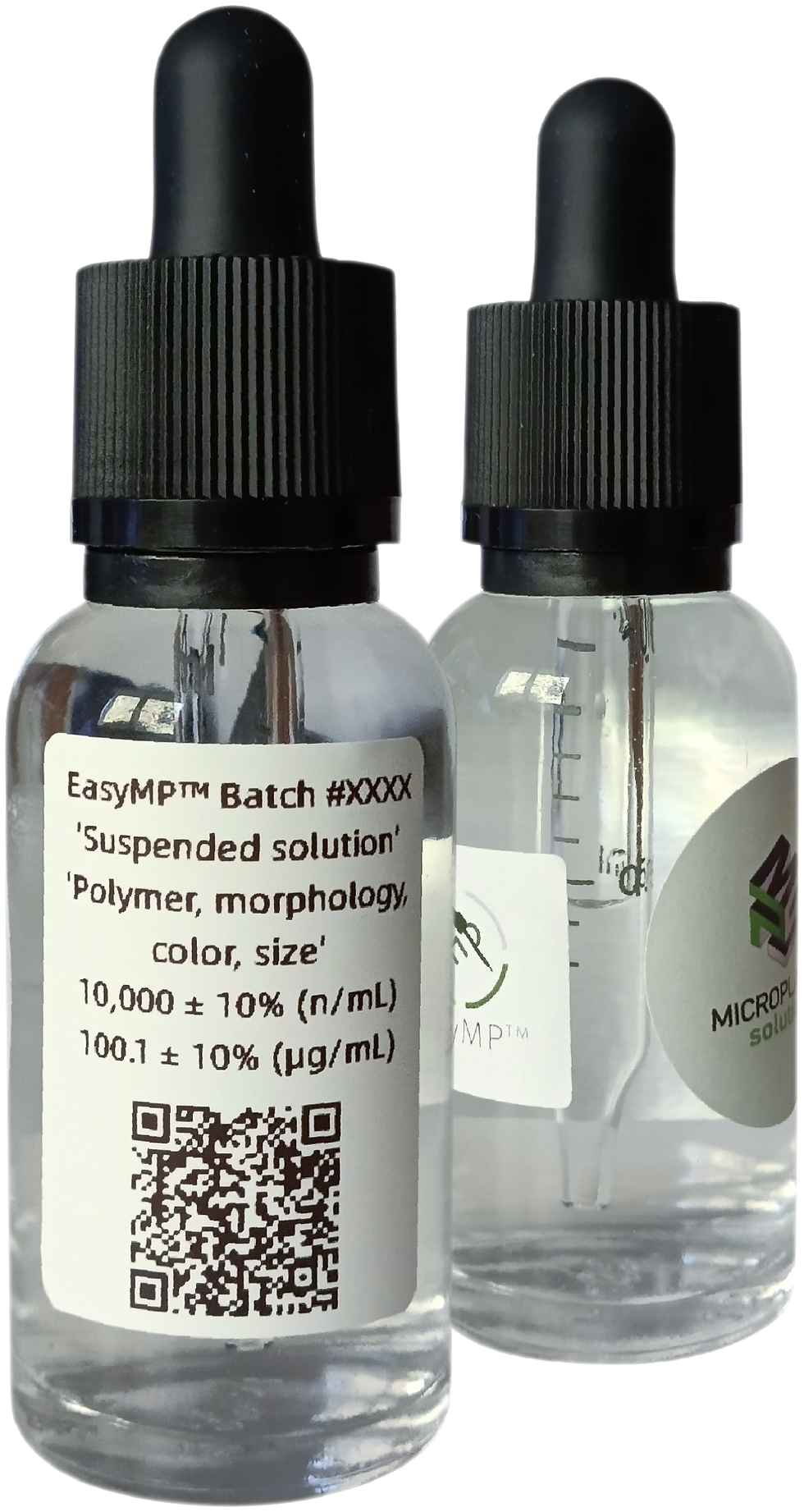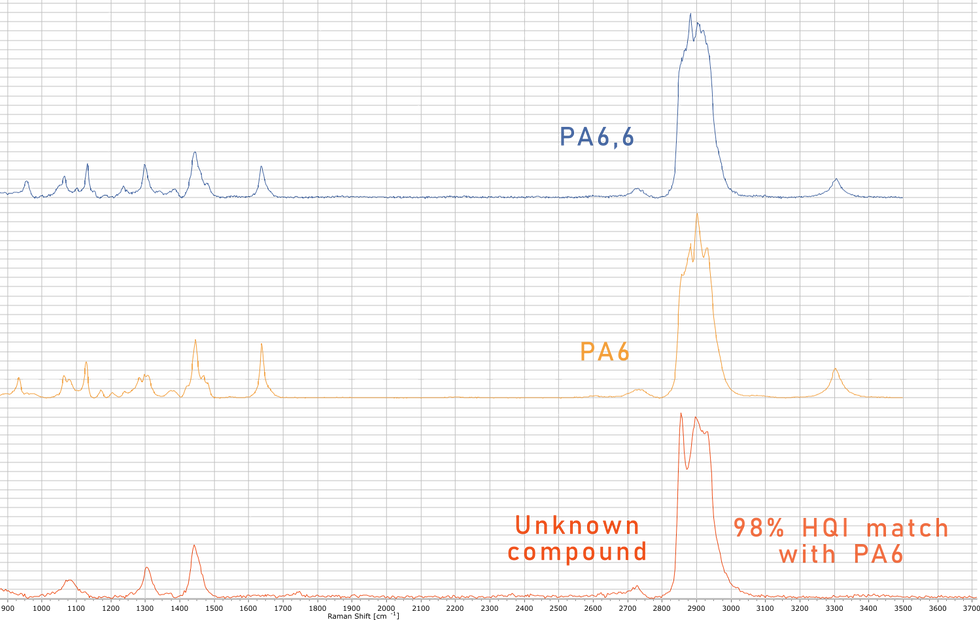Researchers from the University of Bayreuth have developed a new concept for microplastic reference materials.
- Oskar Hagelskjær

- Dec 9, 2024
- 3 min read
Updated: Dec 10, 2024
After two decades of continuous microplastic research, the initiative to enhance quality controls is significantly advancing, with a heightened emphasis on developing commercial microplastic reference materials.
We at Microplastic Solution, launched in 2024 our own assortment of microplastic reference materials: EasyMP™ (Fig. 1). After three years of trial and error, we like to say that our reference materials are based on the principle of simplicity — although the development was far from simple — In essence, we produce a solution of microplastic particles in a 95 vol.% ethanol solution and determine the concentration and size distribution by CADFLI (critical angle darkfield illumination) microscopy in four subsamples. Every sample is unique, and although we guarantee that each dosage represents less than 20% error (relative standard deviation), the dosage is not exact. Nonetheless, for most applications, this degree of error falls well within the acceptable range, and the technique allows for considerable customization of the microplastic reference materials.

The year 2025 bodes well for microplastic research
For precise applications, researchers from the Collaborative Research Centre (CRC) Microplastics at the University of Bayreuth have developed a new concept for the production of microplastic reference materials.
The study can be found here: https://doi.org/10.1186/s43591-024-00094-6
The team has developped a creative appraoch wherein plastic pilons are produced by carving a solid plastic block by CNC milling. The empty space between the pilons is filled with gelatin. Subsequently, the block is horizontally cut into thin slices, presenting a film with a known number microplastic particles (Fig. 2).

This technique present an out-of-the-box way of thinking, when it comes to microplastic reference material manufacturing (traditionally dominated by cryomilling), but is currently spatially limited to particles >125 µm (Fig. 3). The authors however, are optimistic that the technique could achieve pilons with a diameter of 1 µm.

To transfrom the pilons into fragments, the resuling plastic + gelatin column plates were cut using cryomicrotomy. The thinnest slicest presented in this study, reached a thickness of 20 µm, yet it remained unclear whether thinner slices could be prepared. Consequently, spatial limitation of the z-plane could also be a limiting factor for the minimum achievable size range of particles by this method.
What lies ahead?
Innovation in the lab is needed to advance our current understanding of microplastic pollution. Despite potential hurdles, we find this innovate method by Oster et al. (2024) to be really exciting, and we congratulate the CRC Microplastics team at Bayreuth Univsersity for their invention.
At Microplastic Solution, we are learning and improving with every reference sample we produce. Because the field is a broad as it is, there is no one-size-fits-all in microplastic research, and that's why we chose to focus on diversity. For this reason, these microplastic reference will fit some experiments better than EasyMP™, and vice versa.
Personally, I am just excited to see new and cool microplastic protocols being developed, and I look forward to seeing what 2025 may bring.
Oskar Hagelskjær, Ph.D. Founder and CEO, Microplastic Solution




Comentários